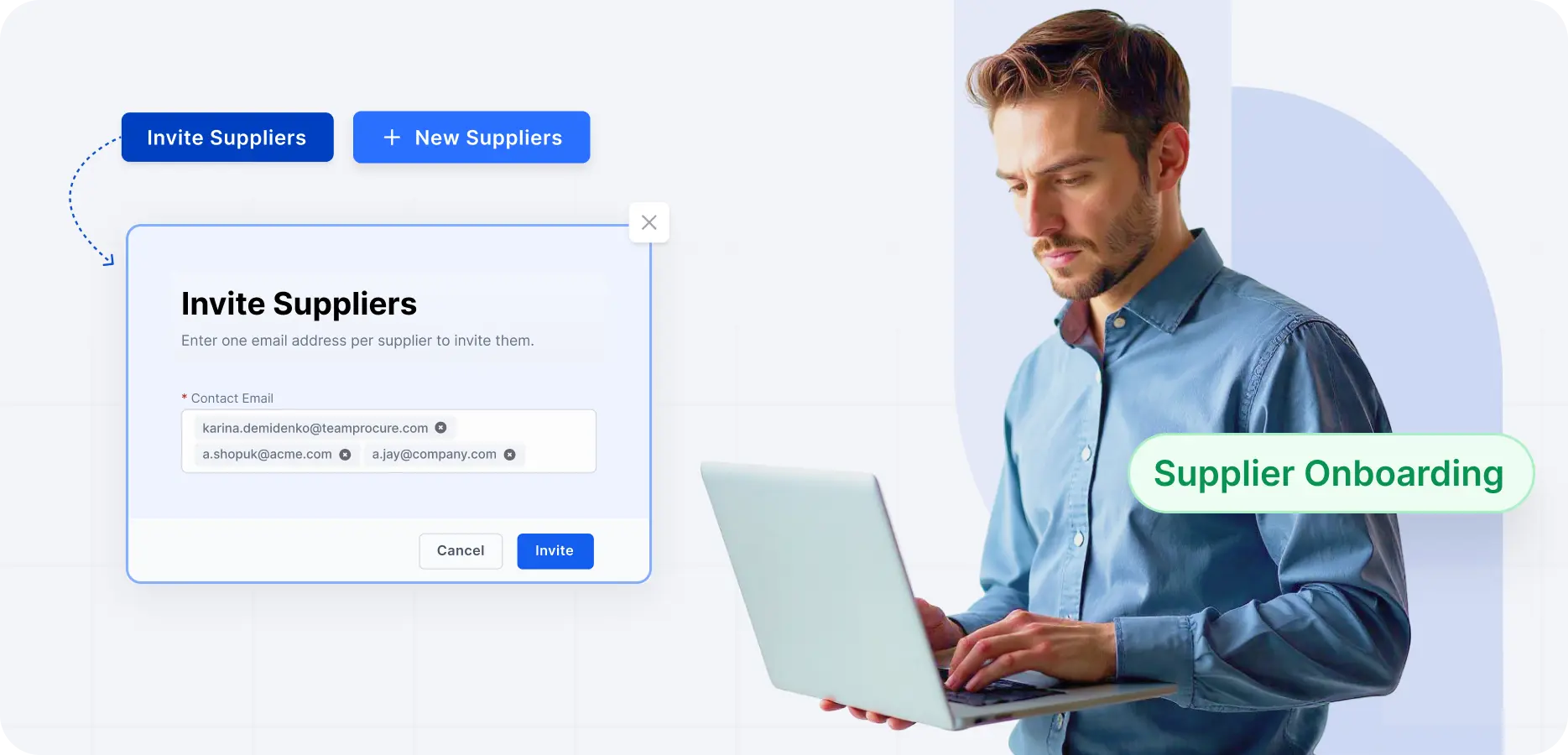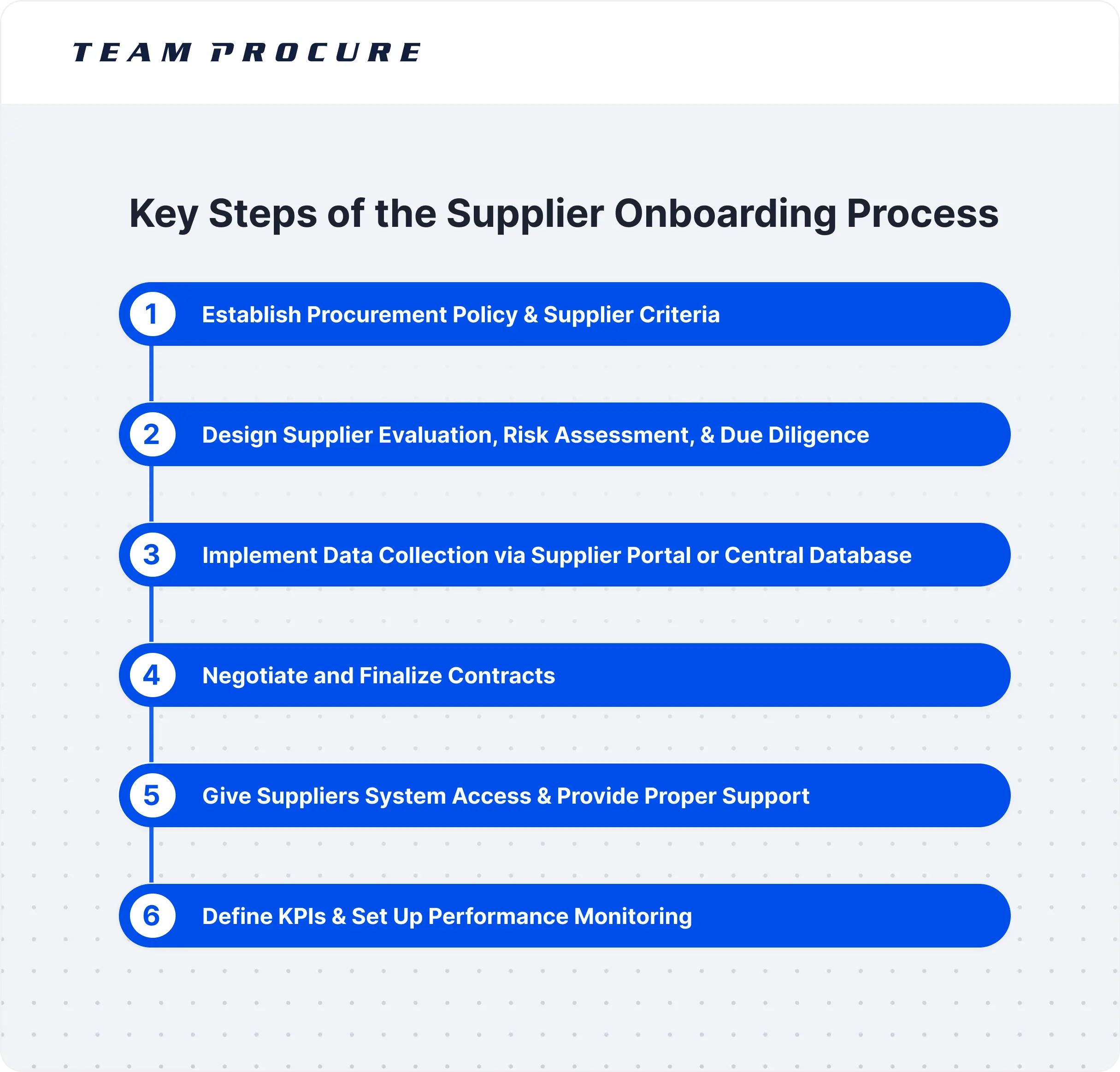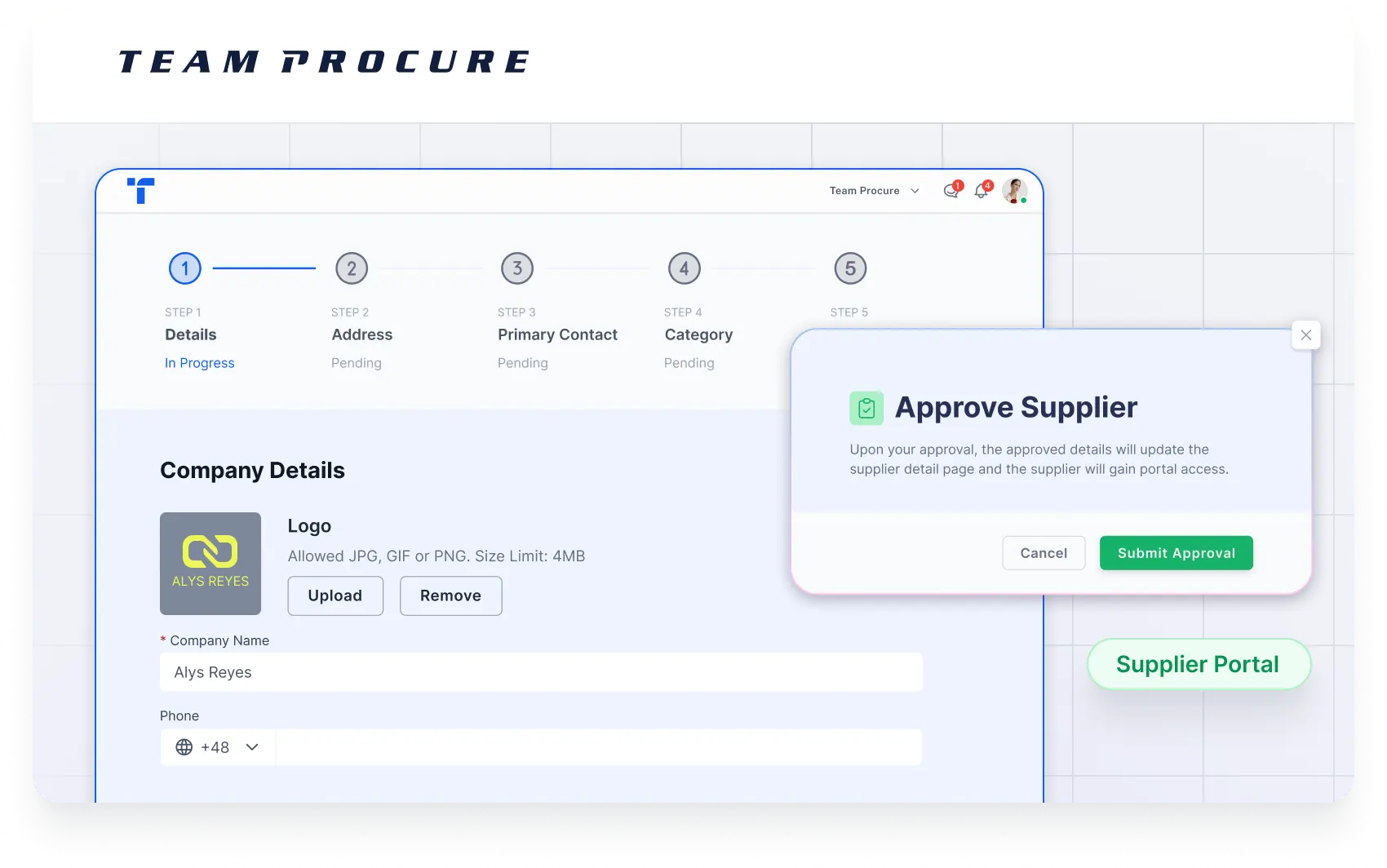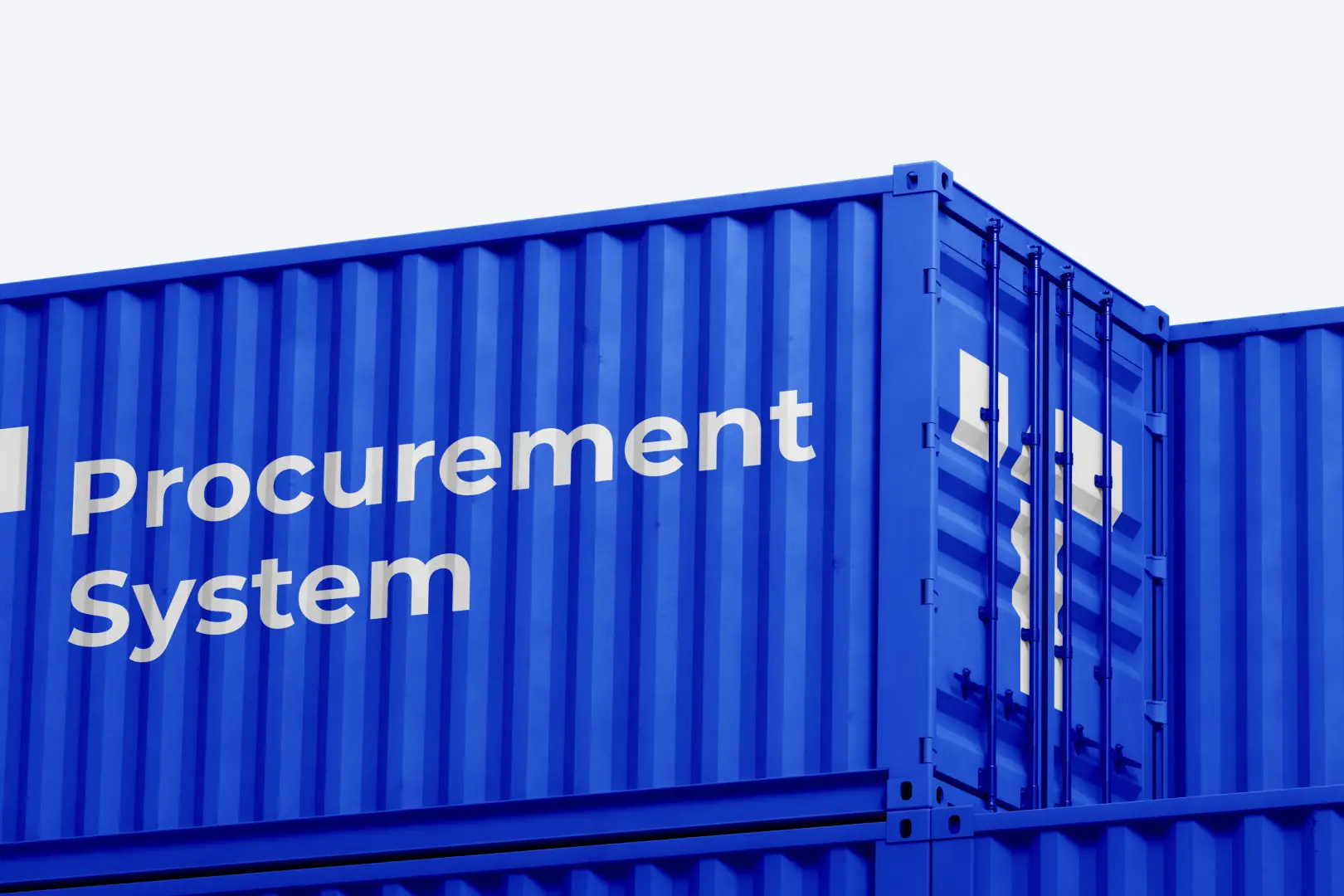
Supplier onboarding has a direct impact on cost and operational efficiency. However, many companies still treat it as a routine administrative task. When onboarding is inconsistent or incomplete, the business pays the price with unverified vendors and unclear responsibilities.
In this guide, we outline a structured onboarding process that reduces risk, saves time, and sets up the supply chain efficiency. You will learn the six key steps to onboard vendors and best practices to make the process fast and reliable.
What is Supplier Onboarding?
Supplier onboarding is the structured process of gathering and validating critical information from a new vendor, then integrating verified suppliers into your company’s procurement systems and workflows. It covers everything from collecting tax and legal documentation to assessing risks, aligning expectations, and setting up tools for communication and performance tracking.
Effective supplier onboarding ensures that every vendor is ready to operate within your business environment from day one. Early alignment sets the tone for long-term business relationships built on transparency and accountability.
Why Supplier Onboarding Matters
Supplier onboarding is not a formality but a key procurement initiative that directly affects performance and profitability. A strong onboarding process helps organizations:
- Reduce risk through early checks on financial stability, legal compliance, and operational capacity.
- Improve efficiency by minimizing manual tasks and avoiding rework later.
- Control costs by aligning on pricing, payment terms, and deliverables up front.
- Build stronger relationships by starting with clear expectations, mutual liability, and transparent communication.
When onboarding is rushed, the impact is immediate. It disrupts the overall stability of the supply chain. Issues such as missed deadlines or lack of visibility affect production schedules and delivery targets. Poor onboarding also contributes to quality problems when product standards are not clearly defined up front.
In contrast, building structured onboarding workflows and consistent communication with suppliers supports good relationships and ensures agility when things change.
Key Phases of a Strong Supplier Onboarding Process
A structured onboarding process helps you bring in new suppliers faster and with less risk. The key six phases to onboard vendors effectively include:

1. Establish Procurement Policy and Supplier Criteria
The first step in any onboarding process is aligning internally on procurement policy and supplier selection criteria.
Involve procurement, legal, finance, and other relevant teams, and clearly define their roles in the process.
Set supplier selection criteria that cover factors such as risk profile (e.g., financial stability), spend category, geographic location, and strategic value to your business. These criteria should connect back to business goals and practical requirements such as delivery timeframes, quality standards, and compliance obligations.
2. Design Supplier Evaluation, Risk Assessment, and Due Diligence
Before approving any supplier, evaluate key factors such as financial stability, operational capacity, legal standing, and market reputation. This can include reviewing audited financials, credit ratings, or site visits. Run background checks, request relevant certifications such as ISO or SOC 2, and assess potential risks tied to geography, industry, or supplier type.
For suppliers that handle sensitive customer or financial information, review their data security policies and compliance with standards like GDPR or ISO 27001. This step helps confirm suppliers meet your risk tolerance.
3. Implement Data Collection via Supplier Portal or Central Database
Streamline data gathering by using a centralized system instead of manual processes. Use a vendor portal or similar supplier onboarding tools to collect contact information, tax documents, certifications, and insurance records. These tools allow suppliers to upload documents directly and keep their profiles up to date. Features like validation checks, reminders, and approval workflows help reduce back-and-forth and speed up supplier qualification.
4. Negotiate and Finalize Contracts
Go beyond standard boilerplate contracts: make sure they cover service-level agreements (SLAs), delivery timelines, payment terms, responsibilities, and confidentiality clauses. Spell out obligations, and confirm both parties agree on expectations, including any penalties for noncompliance.
5. Give Suppliers System Access and Provide Proper Support
Suppliers should have direct access to everything they need to deliver efficiently, such as purchase orders, RFQs, and invoices. That should be able to update their profiles, view order history, confirm pending actions, and manage documentation with ease.
At the same time, your team plays a key role in enabling this process by explaining how systems work, guiding suppliers through key workflows, and offering training when needed. Clear onboarding instructions, defined next steps, and available support contacts help your vendors operate confidently.
6. Define KPIs and Set Up Performance Monitoring
Establish measurable KPIs such as on-time delivery, quality rates, responsiveness, and compliance metrics. Use performance tracking dashboards or tools built into your supplier management system. Leverage this data for regular reviews, feedback sessions, and continuous improvement initiatives.
Best Practices to Elevate Your Onboarding
Even with a solid onboarding process in place, there is always room to improve. The following best practices help strengthen your onboarding and build better supplier relationships from the start.
Assign a Single Onboarding Coordinator or a “Champion”
Appoint a responsible person — or, in larger organizations, a small team — to oversee the full onboarding lifecycle. This coordinator serves as the main point of contact, tracks deadlines, monitors vendor status, and manages dependencies between teams.
Having a single coordinator ensures consistent communication, quicker issue resolution, and a clear channel for collecting feedback from both internal teams and suppliers.
Automate Where Possible
Manual supplier onboarding is not only error-prone but also time-consuming. Collecting and verifying vendor information through spreadsheets or emails requires significant back-and-forth, creates delays, and increases the risk of mistakes such as incorrect tax IDs or duplicate records.
Automation helps reduce these bottlenecks. Supplier portals, for example, allow you to send an automated invitation for suppliers to provide information and submit profiles for review. Your team can then approve submissions, request changes, or reject entries, making sure only complete and accurate profiles move forward.
Tailor Onboarding for Strategic/High-Value Suppliers
Not all suppliers require the same level of review. Apply a tiered approach: invest more resources in strategic or high-spend suppliers, while keeping the process lean for standard vendors.
High-value partners may need deeper due diligence, additional checks, or more detailed contracts. In contrast, transactional vendors can be approved using simplified workflows or templates. This prioritization helps teams stay efficient while ensuring that critical relationships receive the attention they require.
Prepare Standardized Templates and Scorecards by Supplier Category
A tiered model works best when supported by the right tools. Standardized templates and evaluation scorecards tailored to each supplier category provide structure and consistency.
Preparing contract templates, risk assessment forms, and approval requirements in advance streamlines the process, reduces manual adjustments, and ensures you capture the right information every time.
Scorecards, based on predefined criteria per category or tier, also make supplier evaluation more transparent and objective.
Maintain Continuous Supplier Evaluation
Onboarding is only the starting point. Once suppliers are active, keep tracking their performance against the metrics defined earlier, such as delivery timeliness, quality, responsiveness, and compliance. Use system-generated reports to identify issues early, and schedule reviews to discuss results and improvement opportunities.
Ongoing monitoring ensures accountability and allows procurement teams to act before small issues impact operations or customer outcomes. In this way, the benefits of a strong onboarding process carry forward into long-term performance and partnership.
How Team Procure Streamlines Supplier Onboarding
The upcoming platform update brings in the Supplier Portal, a central hub for supplier registration, onboarding, and day-to-day interactions. It gives vendors a simple way to get started, while buyers keep full control over branding, workflows, and approvals.

Key Supplier Onboarding Features
- Automated Invitations: Send suppliers an onboarding invite with a direct link, reducing manual work while they fill out their own profile details.
- Category-Specific Questionnaires: Create forms tailored to supplier categories, so when a supplier picks their category, they only see the questions that apply to them.
- Customizable Fields: Add text inputs, dropdowns, checkboxes, or file uploads to collect everything from certifications to banking details.
- Onboarding Approvals: Customize the approval flow to fit your organization. Add relevant people to the workflow and set up parallel, multi-step, or conditional reviews.
- Centralized Purchasing: Give suppliers visibility into purchase orders, invoices, and RFQs so they can track activity, respond to requests, and manage transactions in one place.
Together, these features transform supplier onboarding from a time-consuming process into a semi-automated workflow. Procurement teams save time, supplier data stays consistent, and customized approvals help make sure only qualified suppliers get added to the system.
Summarizing
Supplier onboarding is a process that directly shapes cost control and risk management. A shaped onboarding framework strengthens the supply chain network by ensuring that every vendor meets baseline criteria. Treating new vendors as a strategic asset from the start builds resilience into the procurement, supporting faster recovery and continuity during disruptions.
Structured onboarding also contributes to better business outcomes by aligning operations, compliance, and risk controls. When supported by best practices and automation, onboarding stops being a bottleneck and becomes a driver of efficiency and trust.
With its supplier onboarding features, Team Procure gives procurement teams the tools to achieve this at scale. You gain control and transparency, while suppliers get a clear and guided experience. Schedule a demo with Team Procure to see how streamlined onboarding can lay the foundation for long-term success.



